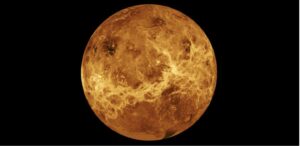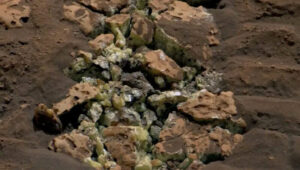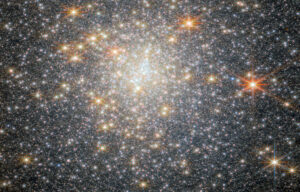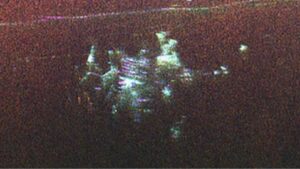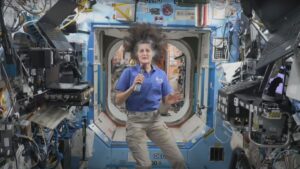Bennu is a rubble-pile asteroid that hurtles closely past Earth every six years. NASA gives it the highest rating on the scale it uses to gauge the magnitude of an impact with our planet.
It’s an alarming stat — but there’s even more to Bennu than meets the eye.
NASA’s OSIRIS-REx probe recently engaged the asteroid at close range to collect samples. The task supported a mission to discover the origins of life on Earth. And when OSIRIS-REx impacted Bennu, embedding itself about half a meter below the surface, it pulled out curious material.

OSIRIS-REx’s sample site on Bennu (composite image by the probe). Photo: NASA
Found: the building blocks of life
That was in 2020, and the spacecraft at last delivered its payload to Earth in September. When researchers cracked it open, they found the building blocks of life.
“We definitely have hydrated, organic-rich remnants from the early solar system,” said Dante Lauretta, the mission’s principal investigator, at the American Geophysical Union (AGU) conference last week. Lauretta added that he expected the cosmochemistry community to “go to town” on the findings.
When they do, they’ll investigate familiar substances with odd properties. The initial findings revealed carbon and some other organic compounds. But they also “cling to everything we touch them with” and have a “cauliflower-like texture,” Lauretta said.
Lauretta did not speak to any possible connection between the particles and life on the blue planet. But they might find one because OSIRIS-REx still hasn’t disgorged its entire contents.
According to LiveScience, the probe filled up with so much Bennu substrate that its contents started leaking on the journey home. While an outer lid contained the spillage, some pieces only escaped the inner container, jamming it.

Illustration showing how the OSIRIS-REx spacecraft impacted asteroid Bennu’s surface when it touched down. Photo: NASA
The research team still hasn’t pried it fully open. What’s inside might mirror what they’ve already seen. Then again, it might not.
“I’ve been looking at meteorites for a long time and I’ve never come across anything like that,” said Lauretta. “It’s a head-scratcher right now. What is this material?

